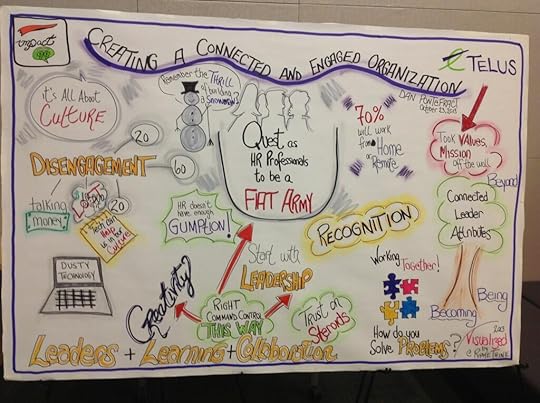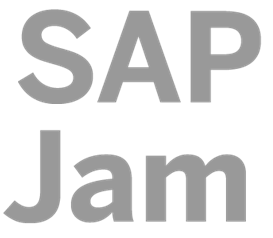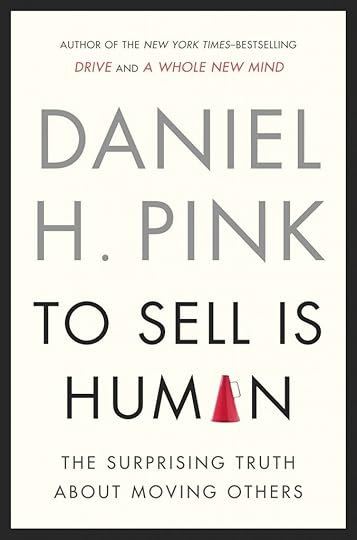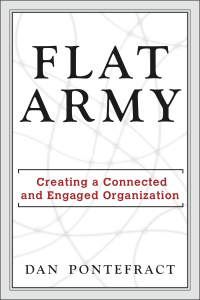Dan Pontefract's Blog, page 45
November 4, 2013
After Five Years In My Role We’re Hiring My Replacement. Are You Interested?
 November 17th, 2013 marks my 5-year anniversary since joining TELUS; an organization where I’ve held the position Head of Learning and Collaboration throughout the past half decade of employment.
November 17th, 2013 marks my 5-year anniversary since joining TELUS; an organization where I’ve held the position Head of Learning and Collaboration throughout the past half decade of employment.
Over the course of those five years I’ve witnessed a remarkable evolution in the culture, not the least of which is the increase in employee engagement … from 53% to 81%, and denoted by AON Hewitt as in “the top 1% globally“. In 2013, TELUS was into Canada’s 10 Most Admired Corporate Cultures Hall of Fame, a distinction it shares with only five other organizations, and an event I attended oozing pride.
If you’re reading this, you may know a bit about me and my passion for three things:
connected and open-based leadership;
pervasive learning; and
collaborative technologies.
These are the central themes to Flat Army, of course, so it shouldn’t really be a surprise. It’s this Venn diagram that has made up my overarching work over the past five years at TELUS. I am so deeply proud of the entire TELUS team — inclusive of the Learning and Collaboration team — and what has been accomplished. It’s a culture prototype for many organizations, although I am obviously biased.
Amongst other key ingredients like the TELUS community programs and the “give where we live” philosophy, the internal ‘Bravo’ recognition program, the TELUS Work Styles initiative (proving a flexible work style can be successful in an $11 billion organization) … I’m not sure there is a better organization to work for on the planet.
Which is why we’re hiring my replacement.
Odd, I know.
Why change?
After five years, TELUS has decided to not only replace me — where the successful candidate will be expected to continue to work with the entire TELUS team, fixated on the mission of keeping the organization at as high a level of engagement as is possible — it is venturing into new territory.
And if you thought I was leaving TELUS, dream on.
At some point in the very near future, TELUS will be launching an initiative known as “TELUS Transformation Office” (or TTO for short) where it intends to help organizations who might be seeking assistance with the various aspects of organizational culture change, adoption, transformation, and so on. Whether an organization is looking to improve its overarching leadership model, career development strategy, flexible work style/telecommuting options, digital/collaborative technology readiness, learning model or even its onboarding and induction programs … TELUS will begin providing various services to help.
What has this got to do with me?
In a nutshell, I’m being provided the opportunity to lead it. I appreciate various conversations I’ve had with many people — from job opportunities to career advice — but it lead me to staying at TELUS and launching a new venture.
Which is why we’re hiring my replacement. I get to continue being a ‘practicing futurist‘, speak, write books/articles/etc and (now) help other organizations who might want or need some help.
So, two things to conclude with:
If you are interested to learn more about TTO … drop me a line over on my TELUS email address
If you are interested in becoming the Head of Learning and Collaboration at TELUS, (and yes, I will still be involved in internal matters at TELUS, and I most certainly will provide mentoring and counsel to the new gal/guy)
“To improve is to change; to be perfect is to change often.” Winston Churchill
640 total views, 274 views today
Dan's Related Posts:An Infographic Depicting Learning & Collaboration in ActionRethinking the Work of LeadershipThere is Nothing More to Say in 2011 … but ThanksKudos Jacques Godin, an Engaged Air Canada EmployeeA Review of SAP Jam
Dear C-Suite: We Don’t Do Training Anymore
 In 2012, Peter Aceto, the President and CEO of ING DIRECT – a Canadian bank with 1.78 million customers and over $38 billion in assets – delivered a speech where he waxed lyrical about being a social CEO. Two points come to mind from that speech. Early on in the talk, Peter said, “I believe we are at the confluence of two revolutions – a social revolution and a technology revolution.” He went on to say later in the speech, “How people work and make decisions is not new, however, technology and social networks has allowed this type of sharing to happen faster, with a broader group of people and outside of traditional boundaries.”
In 2012, Peter Aceto, the President and CEO of ING DIRECT – a Canadian bank with 1.78 million customers and over $38 billion in assets – delivered a speech where he waxed lyrical about being a social CEO. Two points come to mind from that speech. Early on in the talk, Peter said, “I believe we are at the confluence of two revolutions – a social revolution and a technology revolution.” He went on to say later in the speech, “How people work and make decisions is not new, however, technology and social networks has allowed this type of sharing to happen faster, with a broader group of people and outside of traditional boundaries.”
Did I mention Peter is a President and a Chief Executive Officer of a bank?
It’s time to help the C-Suite – aside from Peter Aceto and other learning savvy and employee engagement focused C-Suite leaders – to appreciate and understand that organizations don’t do training anymore.
Sure, for the purists and traditionalists in the learning space who are hell-bent to ensure the ‘sage on the stage’ continues, I’m certain they will scoff at the very mention of trying to erase the term training from Oxford’s illustrious dictionary. But it is my argument learning professionals must help the C-Suite understand that training is merely an event and that learning must now be defined as a connected, collaborative and continuous process. Learning can happen in formal, informal, social, non-formal and experiential ways but it does not solely happen – as is traditionally defined in C-Suite circles – as training. That is, we must help re-educate (and coach) C-Suite executives. Learning is not merely a classroom event or an eLearning course, and training isn’t learning.
As my colleague Dennis Callahan once wrote, “learning happens everywhere not somewhere.” I liken it to what I call ‘pervasive learning’.
 John Hagel, Co-Chairman at the Deloitte Center for Edge Innovation and author of several books including The Power of Pull: How Small Moves, Smartly Made, Can Set Big Things in Motion, also tends to agree. “I am struck by the fact that,” he said to me in an interview, “when I broach the subject of talent development with C-level executives, they almost invariably have two reactions: this is about training programs and that’s the responsibility of our HR Department.” John went on to say, “as a result, they tend to view it as an expense item and it tends to be one of the first things cut in times of pressure.”
John Hagel, Co-Chairman at the Deloitte Center for Edge Innovation and author of several books including The Power of Pull: How Small Moves, Smartly Made, Can Set Big Things in Motion, also tends to agree. “I am struck by the fact that,” he said to me in an interview, “when I broach the subject of talent development with C-level executives, they almost invariably have two reactions: this is about training programs and that’s the responsibility of our HR Department.” John went on to say, “as a result, they tend to view it as an expense item and it tends to be one of the first things cut in times of pressure.”
Jane Hart, founder and principal of the Centre for Learning & Performance Technologies, says, “formal training has been the standard way of developing people for so long now that it has just become accepted practice that this is the way things are done.” She went on in our interview to assert, “we do know from studies, however, that senior managers don’t really believe formal training brings significant rewards, so many retain their training departments because they are expected to do so.”
If the C-Suite thinks talent development is solely about training — a term with which we now abhor — and they leave it to Human Resources (or the Learning Department within HR) to execute, yet the Learning Department itself is there delivering formal courses because ‘that’s how it’s always been done’, it’s no wonder the C-Suite’s view is that learning is in fact training. HR and/or the Learning Department aren’t doing anything to change the fixed mindset of the C-Suite on the definition of learning in the first place so how could they possibly change their own views? It’s not as though the C-Suite spends a lot of time thinking about this particular issue.
And, if the C-Suite believes training equates to a fixed expense line item (think external vendors, T&E, muffins in the classroom, etc.) and the organization happens to run into a quarterly budget or financial issue, it’s no wonder they immediately think, “cut the training”.
 Jenny Dearborn is the CLO at SuccessFactors and SAP Cloud and sees a disconnect between the definition of learning in the organization and how the C-Suite actually learned things themselves before they got to the C-Suite. She said to me, “if you ask anyone in the C-Suite what was their most impactful and career advancing learning or development experience, it would not be a formal training course or even their formal education or degree program.” She didn’t stop there with the irony dripping. “Their career-changing learning experience was a job rotation, stretch assignment, or special project,” she passionately added, “and the coaching and mentoring that went along with it on-the-job to ensure professional growth and success.”
Jenny Dearborn is the CLO at SuccessFactors and SAP Cloud and sees a disconnect between the definition of learning in the organization and how the C-Suite actually learned things themselves before they got to the C-Suite. She said to me, “if you ask anyone in the C-Suite what was their most impactful and career advancing learning or development experience, it would not be a formal training course or even their formal education or degree program.” She didn’t stop there with the irony dripping. “Their career-changing learning experience was a job rotation, stretch assignment, or special project,” she passionately added, “and the coaching and mentoring that went along with it on-the-job to ensure professional growth and success.”
Jenny is right. The irony with the C-Suite is they think training is simply an event and thus an expense, yet their own best learning experience has most likely come from the informal, non-formal or social learning opportunities she so deftly outlined above.
In the summer 2013 issue of MITSloan Management Review Magazine, an article appeared entitled, “The Executive’s Role in Social Business“. The piece provides a fabulous point for learning leaders to contemplate: “Adopting social technologies can often mean changing the way people work, and that means leaders need to invest time and effort in explaining the purpose and value of the new tools as well as providing the necessary financial and organizational support to sustain these workflow changes over time.” What can learning leaders contemplate? They need to invest the time and effort explaining how important our new definition of learning is to the C-Suite itself.
Jane Hart runs a survey every year entitled, “Learning in the Workplace”. The 2013 results with over 600 participants continue my premise that learning in the organization is shifting to a combination of formal, informal and social yet learning professionals aren’t doing much to help the C-Suite understand the importance of the shift. In fact, I believe they are abetting the current situation. Jane reports that 68 per cent of those working in HR or L&D consider formal training and eLearning “to be of little or no value for them in the workplace.” Now that’s ironical.
When cloud-based learning organization Skillsoft surveyed 503 CEOs of organizations with greater than 250 employees across 13 business sectors, quite frankly I was shocked at the results. For example, 42 per cent of the CEOs interviewed remarked “the length of a course was a more important deciding factor than its content.” Also from the report was that the “measurable return on investment from training mattered most to only seven per cent of respondents.” The good news? It seems as though the C-Suite doesn’t care if the training has ROI but the bad news is they still think the content comes in the form of a course, regardless of whether it’s short (42 per cent) or not short (58 per cent).
But the C-Suite still thinks that learning is training, right? And the HR or L&D Department is doing everything they can to help them shift their mindset, right?
 If, as the ASTD remarks, “U.S. firms spend $1,067 per employee (about 2.7% of the entire staffing budget) to provide employees with an average of 32 hours of training programs annually,” how might we switch from a total number of courses and hours of training programs mindset to one that incorporates more of the informal and social learning mechanisms that actually make up a pervasive learning model?
If, as the ASTD remarks, “U.S. firms spend $1,067 per employee (about 2.7% of the entire staffing budget) to provide employees with an average of 32 hours of training programs annually,” how might we switch from a total number of courses and hours of training programs mindset to one that incorporates more of the informal and social learning mechanisms that actually make up a pervasive learning model?
I argue we ignore Woodrow Wilson who once said, “If you want to make enemies, try to change something.” Let’s prove his quote wrong and instead help the C-Suite understand learning need not be trapped in a box or a classroom or an LMS. It need not solely be considered a line item budget cost. It needs to incorporate the entire cadre of learning offerings, options and opportunities.
John Hagel followed up our conversation with some very sage advice. He believes we need a “holistic approach embracing [the] physical environment, virtual environment and management systems – everything that shapes the environment that we work in.” His belief is there are few C-Suite executives who understand that “the most powerful form of learning and talent development occurs in the day-to-day, on-the-job work environment and that it is directly tied to tangible performance improvement in the metrics that matter.”
It’s time for the HR and Learning Departments to take the proverbial bull by the horns and help the C-Suite understand that the organization doesn’t simply conduct training anymore.
Jenny Dearborn also provides us with similar sage counsel. She often asks her C-Suite peers to think back to their own career and determine the most impactful development experience they might have experienced. Jenny says, “100 per cent of the time they say a special project, committee, stretch assignment, or a mentor.” She will then ask her C-Suite peers to think about how best to put structure around those types of informal experiences so it can scale to support their entire business. “Then I lead them down the logic path that points to social and collaborative learning – then they get it,” she concluded.
 Jane Hart wants us to think about Silicon Valley start-ups where they “treat learning in a very different way – and usually adopt very social collaborative approaches to learning and working.”
Jane Hart wants us to think about Silicon Valley start-ups where they “treat learning in a very different way – and usually adopt very social collaborative approaches to learning and working.”
Oh, and what about Peter Aceto? Why don’t you visit him on Twitter (@ceo_ingdirect) or his open blog at blog.ingdirect.ca. I can assure you his open, collaborative leadership style he demonstrates externally is equally reciprocated behind the firewall of ING Direct and that he believes learning happens everywhere not somewhere. The combination of social and informal learning alongside new collaborative technologies has created a sharing culture at ING Direct. He is a C-Suite leader who fully embraces ‘pervasive learning’.
What actions are you going to take to re-educate your C-Suite?
701 total views, 135 views today
Dan's Related Posts:Learning by OsmosisThe Social C-Suite5 Use Cases for a Corporate YouTube in OrganizationsWhere Does Leadership of Social Media Lie?Learning With and From Others: Restructuring Budgets for Social Learning
November 1, 2013
Weekend Giveaway of Eight Copies of Flat Army
It’s the weekend and I’m in a giving mood.
If you would like a free copy of Flat Army, please leave a comment below.
First 8 to respond will get a book.
480 total views, 9 views today
Dan's Related Posts:10 Free Copies of Flat Army … Participate to WinAnnouncing the Front Cover of Flat ArmyDownload Chapter 1 for Free – Flat Army: Creating a Connected and Engaged…The 10 Winners of Flat Army Copies Are …Connected Leader Attributes Graphic from Flat Army
October 28, 2013
The Hierarchy of Education
 It’s my belief we are conditioned as children—through the hierarchy of a centuries-old schooling system—to believe the oldest person in the room (the teacher) is the smartest. That works only for so long. We are further conditioned to believe that when we’re extremely smart we’ll be recognized by the highest authority—the school principal—through commendations and “bravos” on our report cards. Conversely, when things go awry, the teacher (or perhaps the manager in a corporate comparison)—and/or the principal (the vice president or CEO in a corporate comparison) may sternly call us out for unruliness, poor grades, or anything in between.
It’s my belief we are conditioned as children—through the hierarchy of a centuries-old schooling system—to believe the oldest person in the room (the teacher) is the smartest. That works only for so long. We are further conditioned to believe that when we’re extremely smart we’ll be recognized by the highest authority—the school principal—through commendations and “bravos” on our report cards. Conversely, when things go awry, the teacher (or perhaps the manager in a corporate comparison)—and/or the principal (the vice president or CEO in a corporate comparison) may sternly call us out for unruliness, poor grades, or anything in between.
Do you remember the absolute fear of being called into the principal’s office? Particularly so if you hadn’t a clue as to why you were being summoned to the office via the PA system, an office administrator or a student runner. Now that was stressful—and it was not unlike an archaic, antiquated and classically hierarchical annual performance review is in today’s organization.
We are conditioned at a very young age, through the kindergarten-to-higher-education continuum, to believe that it is our individual accomplishments that allow us the chance to achieve great things in life.
But success in today’s world is not merely about academic prowess or individual accomplishments alone. Success is not about power, greed and stockpiling knowledge in a vault. Success can’t be found by proficiently ruling in a silo. Nor is success found through a hierarchical, command and control philosophy.
 If we’re trained as children and teenagers to believe that it is the school system of master and apprentice that breeds success, is there any hope for a more collaborative work experience after high school or higher education? Is there any hope for a more creative, innovative and open thinking organization? As Ralph Waldo Emerson once said:
If we’re trained as children and teenagers to believe that it is the school system of master and apprentice that breeds success, is there any hope for a more collaborative work experience after high school or higher education? Is there any hope for a more creative, innovative and open thinking organization? As Ralph Waldo Emerson once said:
“You send your child to the schoolmaster, but ’tis the schoolboys who educate him.”
949 total views, 494 views today
Dan's Related Posts:I Don’t Do GolfLet’s N-Screen the ClassroomEmployee Engagement is Still Poor but it Does Drive Bottom Line ResultsFlat Army Book Excerpt: Organizational Learned HelplessnessSocial as a Weapon of Class Destruction
October 24, 2013
Visual Depiction of a Connected and Engaged Organization
Pictures sometimes speak louder than words.

Courtesy Leslie-Ann Miller of @RippleThink
347 total views, 347 views today
Dan's Related Posts:For every fall there is a spring in our stepSteve Denning Nails It on Forbes: Paradigm Shift in Leadership and ManagementMy 1800+ LinkedIn Network Graphically MappedCredo of the Collaboration CanoeEmployee Engagement is Still Poor but it Does Drive Bottom Line Results
October 21, 2013
A Review of SAP Jam
 On New Year’s Eve, 2012, the organization where I ply my trade during the day made a decision to move forward with a deployment of SuccessFactors (an SAP company) and alongside the cloud-based talent applications such as learning, succession planning, compensation, performance amongst others, we decided to also implement Jam – their online collaboration tool.
On New Year’s Eve, 2012, the organization where I ply my trade during the day made a decision to move forward with a deployment of SuccessFactors (an SAP company) and alongside the cloud-based talent applications such as learning, succession planning, compensation, performance amongst others, we decided to also implement Jam – their online collaboration tool.
SAP describes Jam as follows:
SAP Jam delivers social collaboration where you work, connecting customers, partners, and colleagues with information, applications, and processes to solve business-critical problems and to drive results – all in your business applications, on your mobile device, or in SAP Jam.
The description is a bit clumsy and could use some work but if you haven’t used Jam before or seen it in action, I thought I’d take this opportunity to provide a review.
Data Points to Date
We went live with Jam in late summer of 2013, and thus far I’d say we are relatively satisfied with what it can do, and where we’re at as an organization in terms of adoption and usage. Of those who are part of the first deployment — namely Canadian-based full-time team members — roughly 55% of the organization has visited Jam. From there, we’ve seen the following interactions and contributions occur:
Comments – 1861
Groups created – 361
Wiki pages created – 2455
Videos created – 248
Photos added – 1196
We already were a somewhat social savvy organization, so the participation rate thus far isn’t surprising … although I still believe it could be much better.
Deployment
For those concerned about the USA Patriot Act — and perhaps recent NSA discoveries — our instance of Jam is hosted in the Netherlands, not in the USA. This was an important issue for us, and was accommodated by SAP and their European data center.
As Jam is cloud-based — and thus customers can benefit from quarterly enhancements and outsourced hosting responsibilities — the level of customization is minimal. A logo, background colour scheme, and a few other UI changes can be made. To be clear, this isn’t a criticism … it’s simply pointing out the degree of customization should not be an expectation.
Jam can be deployed separate or stand-alone to the SuccessFactors suite, so there are some deployment considerations to be careful about. Jam can be populated with users directly — if used standalone — or users can be sourced from the BizX user tables that feed the rest of the SuccessFactors suite. This caused an issue during the alpha and beta testing stages for us as we had Jam deployed first and then the rest of the BizX / SuccessFactors pieces we were launching in stage one. The hurdle was overcome well before we went live to the organization, but the lesson for others is to ensure you sort through the relationship of Jam to BizX if you are launching other SuccessFactors modules at the same time.
Overall, Jam deployed to the organization easier than some of the other SuccessFactors modules. (I can report back on that another day)
Jam User Experience
One of the reasons we did decide to deploy (and purchase) Jam was to begin the process of consolidating some of our existing social tools – and of course to fully embrace the cloud/mobile experience that Jam does provide. Thus far, the user experience within Jam is allowing us to achieve this stated goal.
The product itself does accomplish what it purports to do … through the use of micro-blogging, blogging, groups, polls, tasks, photos, videos, wiki’s, bookmarks, tagging, links and the directory … it unifies a collaboration experience and creates an environment of mutual interactions.
I can’t possibly go into all the user experience features that are hitting the mark, but I can show a few screen shots to demonstrate my thoughts:
The Stream
Easily comment, like, add a photo or video, discussion, task, whatever … it’s Twitter on steroids or perhaps more like Google+ but in a more accessible way (see pic)
Blogs
You can easily scan all blog posts at the company, their level of engagement, etc. (see pic)
Groups
Dead simple to create, and even easier to scan/browse all of them across your org (see pic)
Wikis
They can be as colourful and engaging as you like while plugging in to the other collaboration tools within Jam seamlessly (see pic)
Notifications
Whether through the red bell at the top of the screen or — dependent on how you personally want to set it up — through email notifications, you really can feel synchronously plugged in (see pic)
User Empowered
Jam truly is user focused; it removes the need for administrators and librarians to carry on the conversation. (eg. someone even created a Flat Army group – see pic – cool!)
Improvements I’d Like To See
In full transparency, I’ve already relayed these improvements to Sameer Patel — a collaboration colleague of mine if ever there was one — so let’s hope the development and product management teams continue to improve upon its most excellent base.
Bi-lateral communication/connectivity between SharePoint and Jam
There is a connector available today, but it is one-way only
Skills & Projects
There is great opportunity for Jam — as it plugs into the Career, Learning and Performance modules of SF — to create the coolest and most useful skills & projects tracking piece possible
Photos
There must be a way to delineate between photos in the master view that are profile, wiki-based and knowledge/learning related
Videos
Similarly, videos are an important part of learning, sharing and communicating but there needs to be a better way to categorize and display the videos
Learning Module Integration
A greater degree of integration with the Learning module is still necessary
SAP Stack Integration
Imagine having Jam inside the SAP Financials stack when employees are doing their expense reports? This could be a huge win for the traditional SAP ERP stack and its UI unfriendly modules
Profile RSS
I’d like to be able to add my personal blog’s RSS feed to my personal JAM profile … and more can be brought over from the master record kept within the Employee Profile module of SuccessFactors
Full mobile experience
The Android and iOS apps are fantastic, and our team members who use these devices are in heaven. BlackBerry 10 and Windows apps are also a need though … and I suspect other large sized organizations will want apps for all device types particularly with BYOD gaining steam
Final Thoughts
 As someone who crossed the chasm of high-tech gadgetry when Atari first came out, SAP Jam is a keeper. It creates a sticky, collaboration layer of communication and knowledge sharing for employees … while not being overly obnoxious with unnecessary features.
As someone who crossed the chasm of high-tech gadgetry when Atari first came out, SAP Jam is a keeper. It creates a sticky, collaboration layer of communication and knowledge sharing for employees … while not being overly obnoxious with unnecessary features.
Its mobile experience is superb — aside from the points of improvement above — and the desktop web-version is intuitive and lush with ways in which to collaborate and gets things done. (the real bottom line of a business)
We’re just beginning our journey with SAP Jam, but thus far it’s doing what we wanted it to and we hear of users beginning to push it more and more. That’s ultimately what you want to see; a user base taking it in directions you never even expected.
Post Script
Alan Lepofsky did a great job writing about the potential of SuccessFactors two years ago – I wonder what he thinks now? You may also be interested in this article from SAP Insider entitled, “How TELUS Communications Benefits from SAP Jam“
563 total views, 553 views today
Dan's Related Posts:5 Use Cases for a Corporate YouTube in Organizations16 Months of Social Learning Platform Insanity: A RecapDon’t Simply Follow on Twitter, You Should Spend Time ReviewingThe Hare, the Tortoise and the Jackass of Social HR5 Use Cases for Badges in the Enterprise
October 18, 2013
For every fall there is a spring in our step
I hope the sun’s rays are delightfully breezing across the soft pigment of your face on this fine Fall day and that you pause — just for a fleeting moment — to reflect on the beauty that is the changing of the guard on our treasured Canadian arbors.
‘Tis a season that smacks of irony; how can something so lovely simply fall to the ground. Ah, but it is life, no? We must fall in order to spring again. How are we to stand tall — like the arbors — if we don’t at times fall?
And that rise — like that of the sun — is powerful. It reminds us not to harbor ill-will or a concentrated chagrin. It encourages us to be tall. For every fall there is a spring in our step. And the sun will once again delightfully breeze across your face.

A tree right outside my front window … inspired me to write the prose above.
250 total views, 144 views today
Dan's Related Posts:Virtual Worlds in an Organization are not a Time Waster (and other beefs)Credo of the Collaboration CanoeLessons in Leadership From Jim Balsillie and Mike LazaridisWHY I Wrote Flat Army: The Flat Army Golden CircleThe Harmonic Leader: Stage 5 of 5 in the Leadership Tonic Scale
October 17, 2013
Rethinking the Work of Leadership
 In 1973, Peter Drucker stated in his book Management: Tasks, Responsibilities, Practices, “Management is not culture-free, that is, part of the world of nature. It is a social function. It is, therefore, both socially accountable and culturally embedded.”
In 1973, Peter Drucker stated in his book Management: Tasks, Responsibilities, Practices, “Management is not culture-free, that is, part of the world of nature. It is a social function. It is, therefore, both socially accountable and culturally embedded.”
Some thirteen years later, Tom Peters remarked in the article Managing As Symbolic Action: “It requires us, as managers, to get people to share our sense of urgency in new priorities; to develop personal, soul-deep animus toward things as they are; to get up the nerve and energy to take on the forces of inertia that bog down any significant change program.”
Yet, here we are in 2013 with organizational leadership models that continue to deny the social nature of organizations and wallow in inertia.
Our leadership practices remain authoritative. People are disengaged, distrusting and perhaps even disenfranchised.
According to the 2013 Edelman Trust Barometer, fewer than 20% of respondents believe leaders are actually telling the truth when confronted with a difficult issue in their organizations. Furthermore, a study conducted by the Human Capital Institute and Interaction Associates in 2013 found only 34% of organizations had high levels of trust in the places they work. And, a paltry 38% reported that their organizations had effective leadership running the show.
To cap off a small sliver of dismal data points, research firm Gallup found that over a twelve-year period between 2000 and 2012, the percentage of engaged employees in the workforce has shifted between 26% and 30%. That is, roughly 70% of employees in today’s organizations have spent more than a decade essentially collecting a pay check, an almost Shakespearean spectacle of tragic ambivalence.
What if our approach to leadership was to evolve into Drucker’s vision of “socially accountable and culturally embedded” management?
Cam Crosbie is the CIO of Equitable Life Insurance Company of Canada, represented by more than 10,000 independent producers across Canada and Bermuda. Cam completely understands the need to “lead without authority.” He does so, quite simply, by asking questions rather than barking orders. Before moving forward with a big decision or a large project, Cam makes a practice of asking lots of questions, including, as he says, “even the so called ‘dumb ones’”.
As a CIO, Cam believes it’s important to reach out to others and inquire before pushing ahead. Cam said, “I hope that in some small way if people see the CIO unashamedly asking the simple questions, it clears the way for clearer and more meaningful discussion.” Perhaps the first step toward a better future for your organization is to acknowledge that you don’t necessarily know the way there — and, just as important, to understand that by asking questions, you not only awaken and engage people, you stand to collect more valuable perspective and ideas than you would by starting from a position of authority.
Leadership isn’t a 9-5 job — it’s communal, it’s holistic and it’s accretive. It’s time to abandon the long-held notion that the “leader” knows all and should decide everything. A fancy title doesn’t put you above others — it puts you in their service.
TELUS, a national telecommunications company in Canada, with $11 billion of annual revenue and more than 40,000 employees worldwide (and where I am head of learning and collaboration), has worked incredibly hard over the past five years to raise employee engagement from 53% to 80%. It did so through myriad actions including the launch of the TELUS Leadership Philosophy. The TLP is an enterprise-wide leadership framework that cultivates a collaborative, social, open and engaging mindset among all employees regardless of rank or title. It encourages all employees to “engage and explore” with one another before “executing.” It defines key behavioral attributes such as communicating, collaborating, learning, deciding and adapting such that everyone can speak the same leadership language.
In mid-2010, an internal program was born at TELUS entitled Customers First. The overarching goal of the program was to improve the likelihood that TELUS customers would recommend the company. As the program began to gain traction, another idea surfaced: Customer Commitments. Think of the commitments as customer promises — specific actions that any TELUS team member would carry out to help a customer regardless of role.
Instead of locking its most senior executives in a room to decide what the Customer Commitments were going to be for the organization, we designed a collaborative process that involved the entire organization. Over 1,000 different examples surfaced over a two-month period. Through focus groups, interactive online polling and voting, the 1,000 were whittled down to a final four.
If the culture at TELUS was one that relied on authoritative leadership, the Customer Commitments would have been created in a couple of hours by a few authoritative leaders. Because the culture was healthy, open and participative as opposed to dogmatic and ruthlessly hierarchical, the organization collaborated without authority. This is the work of leadership today: asking questions, involving people, connecting them to each other, creating a platform for their insights and ideas to make a real impact — in other words, unleashing leadership behavior everywhere.
 In this moment of reflection, as we seek to redefine the work of leadership, let us remember the words of Nelson Mandela:
In this moment of reflection, as we seek to redefine the work of leadership, let us remember the words of Nelson Mandela:
“[Ubuntu is] the profound sense that we are human only through the humanity of others; that if we are to accomplish anything in this world it will in equal measure be due to the work and achievements of others.”
If you’re lonely at the top, it’s time to start recognizing and amplifying the contribution of those around you.
513 total views, no views today
Dan's Related Posts:Future Of Work: A Flat Army Of Open Leadership via A.G. LafleyThe Social C-SuiteApparently, Organizational Culture is CrapThe Organization Needs to Ask Itself Tough Questions to SurviveThe Fifteen Habits of a Connected Leader
October 16, 2013
Selling Yourself & Your Ideas is the New 20 Percent Time
 While I haven’t yet read Daniel Pink’s — the other dp — latest literary offering, “To Sell Is Human” I can glean from the chapter titles — and chapter one in particular — that he believes a) we’re all in the business of selling ourselves and/or our ideas and b) we unknowingly devote a good portion of time doing so.
While I haven’t yet read Daniel Pink’s — the other dp — latest literary offering, “To Sell Is Human” I can glean from the chapter titles — and chapter one in particular — that he believes a) we’re all in the business of selling ourselves and/or our ideas and b) we unknowingly devote a good portion of time doing so.
The first chapter is described as follows:
We’re All in Sales Now – Some 1 in 9 workers still earn a living in traditional sales. The other 8 in 9 are engaged in “non-sales selling.” We devote upward of 40 percent of our time on the job to moving others.
Over at Google, there are ‘rumours‘ the oft described “20 percent time” of their engineers is being thrown to the bin. That particular morsel of free time was given to engineers so they could create and/or work on whatever they thought might be useful, cool, creative … even funky.
Heck, they brought us AdSense.
Ok, bad example, but you like your Gmail account, right?
Between Google’s 20 percent time concept, Pink’s new book and my own mental musings, I’ve stumbled across a theory I’d like to test.
I’ve never personally worked on my own, as a freelancer or as ‘my own boss’. I’ve always worked for ‘the organization’, be it at a high school, a higher education institution or for the past 12 years in the corporate jungle.
What I’ve begun to realize (and observe) however in my time in ‘the organization’ is that employees need to be thinking of their own time management planning in a different light. I believe that in order to be successful in the organization we need to do a much better job of selling, communicating, pitching, positioning and depicting our ideas — and to a degree ourselves — inside the organization itself.
The problem we all face, however, is time itself.
Ever hear of the term, “we need to do more with less“?
Employees may in fact need to devote 20 percent of their time to the activity of selling themselves and communicating their ideas to not only be successful but to feel good about themselves, their roles, their career and their objectives.
 Over at Hacker News, my thoughts seemed to magically converge when surfing the ole internet in a quest to validate my assumptions. On one hand there was debate amongst anonymous Google engineers who chimed in on the discussion forum regarding Google’s 20 percent time concept. On the other, surreptitious and unknowing discussion of Pink’s new thesis/book. One of the comments from an engineer suggested the following:
Over at Hacker News, my thoughts seemed to magically converge when surfing the ole internet in a quest to validate my assumptions. On one hand there was debate amongst anonymous Google engineers who chimed in on the discussion forum regarding Google’s 20 percent time concept. On the other, surreptitious and unknowing discussion of Pink’s new thesis/book. One of the comments from an engineer suggested the following:
However, I would agree that it <Google’s 20 percent time> is “as good as dead”. What killed 20% time? Stack ranking.
Google’s perf management is basically an elaborate game where using 20% time is a losing move. In my time there, this has become markedly more the case. I have done many engineering/coding 20% projects and other non-engineering projects, with probably 20-40% producing “real” results (which over 7 years I think has been more than worth it for the company). But these projects are generally not rewarded. Part of the problem is that you actually need 40% time now at Google — 20% to do stuff, then 20% to tell everyone what you did (sell it).
I am a bit disappointed that relatively few of my peers will consciously make the tradeoff of accepting a slower promotion rate in return for learning new things. Promotion optimizes for depth and not breadth. Breadth — connecting disparate ideas — is almost invariably what’s needed for groundbreaking innovation.
Take aside the actual point to this engineer’s post — which of course has more to do with the Jack Welch inspired stack ranking model of performance management, which I’ll deal with at another point in time in this space — and you will see a hint of what I’m trying to point out.
Part of the problem is that you actually need 40% time now at Google — 20% to do stuff, then 20% to tell everyone what you did (sell it).
I’ve posted it again above from the original comment and made it both bold and green for super cool special effects to solidify my point. If that doesn’t work, I swear I’ll electronically mail you a dancing baby animated gif once a day until further notice.
As I only personally know an existence within ‘the organization’, I can assure you this engineer is emoting candidly about the nuances of the organization itself. It is happening to you. It is happening to me. It happens to everyone in ‘the organization’.
It takes time to make change and it takes an inordinate amount of time to sell and communicate your own ideas for change.
As a result, perhaps we all should be sorting through our own time management planning mechanisms and coming up with ways in which to devote 20 percent of our time to this necessary action.
I’ll keep an eye out for an AdSense advertisement that might help us both. I’ll read Pink’s new book as well, where he probably has already solved my corporate anthropology nightmare.
387 total views, 29 views today
Dan's Related Posts:Virtual Worlds in an Organization are not a Time Waster (and other beefs)Friday Fun: You Don’t Have an Office?Credo of the Collaboration CanoeMy Employee Engagement Advice to a StrangerLessons in Leadership From Jim Balsillie and Mike Lazaridis
October 8, 2013
Coaching Should Be An Expectation Of All Connected Leaders
 The most overused yet inappropriately applied term in an organization is “coaching.”
The most overused yet inappropriately applied term in an organization is “coaching.”
There are organizational coaching models, executive coaching programs, external executive coaches, company-defined coaching steps, coaching interventions and in-house coaches too.
Group coaching?
Sure. Speed coaching? Why not. Virtual coaching? But of course. We see requests aplenty from keynote speakers who are so-called coaches. Not to fear, you can become a coach yourself by enrolling in an executive education program at a university that offers executive coaching certificates as well. And now, coaches are getting coaches for themselves too.
Wow, I think I need a couch . . . er, coach.
To be clear, it is an expectation of mine that if you want to become a connected leader, to demonstrate you are going beyond the call of leadership duty you must agree that coaching your team and others in the organization is mission critical. But what is coaching in the Flat Army paradigm? Let’s first dish up what it’s not. Coaching is not a formulaic process when demonstrating the connected leader attributes. It is not the act of hiring an external executive or otherwise coach to assist you with your team. It isn’t an intervention and should never be used as a means to solve some form of employee crisis or singular performance issue. Any of these acts runs up against our view of coaching.
 In a study of approximately 285,000 employees and leaders across U.K. firms, the Chartered Institute of Personnel and Development finds that 30 percent of leaders, with reference to whenever they meet for a one-on-one meeting with their direct reports, suggest they are—in their minds—coaching their people first and foremost. Sixty-four percent of leaders feel they are actively coaching only part of the time in one-on-one meetings. Not too shabby when you think about it: a total of 94 percent of leaders believe they are coaching their team members in one-on-one meetings.
In a study of approximately 285,000 employees and leaders across U.K. firms, the Chartered Institute of Personnel and Development finds that 30 percent of leaders, with reference to whenever they meet for a one-on-one meeting with their direct reports, suggest they are—in their minds—coaching their people first and foremost. Sixty-four percent of leaders feel they are actively coaching only part of the time in one-on-one meetings. Not too shabby when you think about it: a total of 94 percent of leaders believe they are coaching their team members in one-on-one meetings.
Now, the flip side. Employees report that in their minds coaching only occurs 6 percent of the time at those meetings where leaders feel they are actually coaching. Where employees experience partial coaching, a measly 34 percent indicate they believe some coaching takes place. My hypothesis is that the definition of coaching is misconstrued by both sides of the equation. Leaders think they are doing it and employees think they aren’t receiving it.
Ian Chisholm, Bradley Chisholm and Mark Bell penned the article “Coach vs. Mentor: Designing the Finest Meaning of Words” and it’s within this piece that a paragraph caught my attention:
Coaching is the intentional positioning of others to perform at incrementally higher standards, to learn more from their experience as it emerges, and to be increasingly engaged in their endeavours. It is an approach to leadership that invites more leaders from all levels in our organizations, communities and families.
I like to think that the phrase “intentional positioning” can be reflected by the terms “counsel,” “feedback” and “advice.” That makes sense to me. And I love how they determine the stakeholder audience as including “organizations, communities and families.” Leadership isn’t a nine-to-five job; it’s communal, holistic and accretive. Coaching—in the context of Flat Army and thus going beyond a connected leader—is an ongoing informal conversation with the employee who focuses on providing the following:
counsel on current objectives and actions to categorically improve the result
feedback concerning their progress or improvements on Flat Army habits
advice on personal or career advancement or opportunities
In summary, to demonstrate the attribute of coaching is to assist your team member—and to help them improve—with issues going on at work, on the personal development front and with respect to career development.
That’s it! It’s an ongoing and informal discussion with your team members, albeit individually, to help them get better. Seems simple, doesn’t it? The problem is, too many human resources professionals, consulting shops and accrediting institutions have whipped organizations into frenzies just by the mention of coaching. We must demystify the term in order to bring some sanity back into the definition of leadership and to the definition of coaching.
How to be coaching:
Binary is not an option: Relate to your people through a spectrum of colors, not simply black and white.
It’s not a contract with your team member; it’s a relationship: Nurture it at all times and pervasively.
Every minute matters: For any situation, treat it as an opportunity to counsel, advise or provide feedback that aims to improve.
The ignorant and reckless command before listening: Instead, lend an ear and help bring the story to the surface before advising on anything.
Your brain is not a contingency backup: Create a system in which you’re recording conversations, thoughts and ideas for each of your team members. Review these regularly.
Don’t be purposeless: There should be purpose in each coaching situation, always intending to improve the employee’s overall capabilities on actions, habits or personal quests.
 Between 1993 and 2003, David Galloway was the vice president of customer care at Crystal Decisions—the original makers of Crystal Reports software—a company I used to work at until it was acquired by Business Objects in 2003. He continued on in his role until 2006. When I joined the company in 2002, I joined the services arm, not even in Dave’s bailiwick. But he took me under his wing, and through a series of coaching conversations over an eighteen-month period, Dave helped me in my adjustment to the new company, navigating my actions and objectives, and helped me become a better leader at the company. He was an incredible listener and an idea factory, and had at all times a genuine interest in my well-being and my success. He was (and still is) the example connected leaders should be striving for. Any time we talked, it was a coaching conversation. It’s always been there in the back of my mind as I strive to be a better leader: “Am I being like Dave?”
Between 1993 and 2003, David Galloway was the vice president of customer care at Crystal Decisions—the original makers of Crystal Reports software—a company I used to work at until it was acquired by Business Objects in 2003. He continued on in his role until 2006. When I joined the company in 2002, I joined the services arm, not even in Dave’s bailiwick. But he took me under his wing, and through a series of coaching conversations over an eighteen-month period, Dave helped me in my adjustment to the new company, navigating my actions and objectives, and helped me become a better leader at the company. He was an incredible listener and an idea factory, and had at all times a genuine interest in my well-being and my success. He was (and still is) the example connected leaders should be striving for. Any time we talked, it was a coaching conversation. It’s always been there in the back of my mind as I strive to be a better leader: “Am I being like Dave?”
Coaching should be an expectation of all connected leaders. That is, if the guidelines and definition above are adhered to. If all else fails, just be like Dave.
707 total views, 159 views today
Dan's Related Posts:The 20% Leadership ChallengeFive Uses for Virtual Worlds in the Workplacethe FLAT ARMY cheat sheetThe Fifteen Habits of a Connected LeaderLinking Company Growth to Enterprise 2.0 & Learning 2.0





